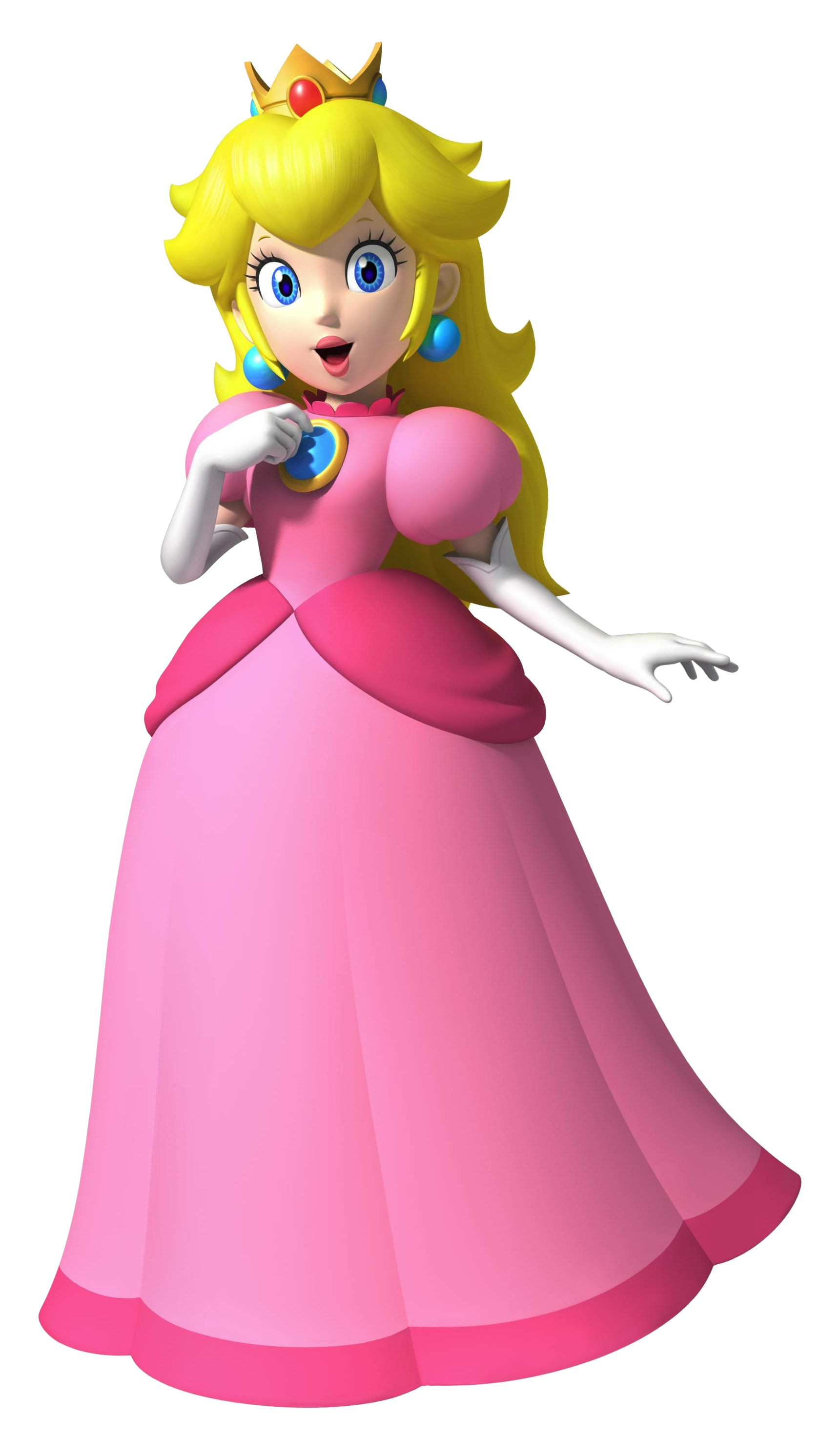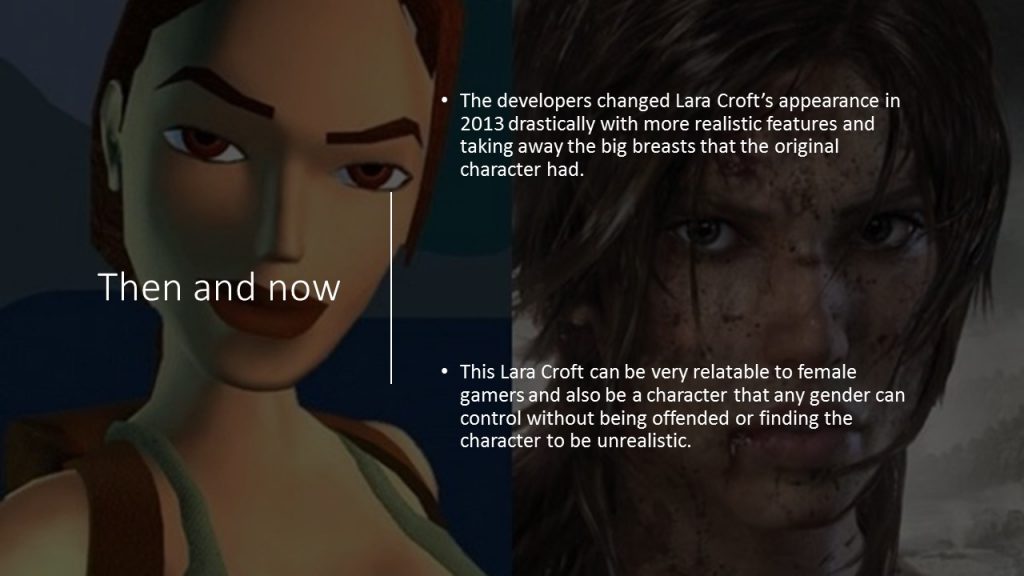Gender inequality in video games has dated back since the 1980s with characters portraying as different genders because of unpopular emotional state or reactions from consumers and advertisers alike. Modern video games have improved this issue but still include sexist features in certain video game titles, as well as the community of female gamers being left out and harassed for playing video games. The number of female gamers has increased through the years and that number continues to grow each year. Video games should no longer be recognized by the public as a hobby or pastime just for young males, but for all genders and ages. Females are now accounted for over half the population of people who play video games.
This article will discuss gender issues and the roles they have throughout the video game market and community. It will have sources with dates to show the positive changes that have occurred since the beginning of gaming. Video games are not only for the male demographic and there are a lot of reasons why it has seemed that way. Female gamers are usually overlooked or harassed for their favorite hobby and then transgender characters in video games are handled very unprofessional by developers and publishers.
The female demographic of video games has been increasing with more players than some would believe. A 2014 study showed more females interacted with the video game market than males. This independent study made by the Internet Advertising Bureau (IAB) showed females were accounted for half of the population of gamers. The statistics showed females being 52% of people who played a type of video game on a half-a-year basis. In 2011 the number of females that played a video game was at 49%.
The IAB adds that not only are women growing in numbers as gamers but also people of older age. This reason has been connected with video games that are free-to-play and at the hands of mobile applications. 61% of video games in the last 6 months of 2014 were free. Applications on smartphone and tablet devices have become the most used gaming platform, moving away from the traditional home video game consoles. Similar to the way home gaming consoles overtook the market from arcades. Overall, 55% of users utilized mobile applications, online video games were at 48%, and physical copies of video games were at 40%. Only 27% of people were users of all types of gaming according to the IAB in the UK.

Game Analytics Company, Quantic Foundry, on what gaming genres are most popular with females.
There has always been speculation that video games are an entertainment that only applies to males but there is also another gender inequality issue at hand when it comes to the video game market and that is gender roles. Since video games became a mainstream market in the media in the 1980s there has been numerous transgender characters. They have been secondary and mostly background characters, but overall have had some sort of impact in the gaming community.
An IRDL article over the Super Mario Bros. character, Birdo, goes into detail about the issue that started back in the 1980s with the transgender character. “The pink dinosaur wearing a bow named “Birdo” and identified by the game manual as a male in the 1988 game Super Mario Bros 2, is probably the industry’s most famous character with supposedly conflicting masculine and feminine signifiers,” said Adams. Birdo is often counted as the first transgender video game character. At the time, Birdo was given a female voice actor in the remake of Super Mario Bros. 2. On the Super Mario Strikers Spanish website, it describes Birdo’s gender as indeterminate where on the European website it is listed as having a male body. In the official manual for Super Mario Bros. 2, it says that Birdo is a boy who “thinks he is a girl”. It also added that Birdo would rather be referred to as “Birdetta”.
Games like The Sims and Mass Effect allow players to choose their gender when making a customizable character. These games also allow them to be romantically involved with the same sex.
There are some LGBT characters that are designed to be LGBT though and not because players make them that way. Their representation matters as their characters have helped bring equality to today’s standards.
Erica, from the Catherine series, was a surprise for many players. Infidelity, a weird puzzling dream world, and the bright smile from Erica, a waitress in the game, grew more mysterious as the story went on; while the reason behind the red lipstick she wears became clearer for gamers, especially after Toby, the main protagonist, loses his virginity to her. The truth is only revealed during one of the possible endings of the game. Erica used to be a male named Eric.
Mass Effect 3 gives a positive example of a gay character with Steve Cortez. Despite all the customization options, Cortez’s sexuality does not change based on your choices or romantic advances. He had a husband who perished in a debt-based conflict but as the game progresses you can comfort and romance the grieving man, which helps him move on through the tragedy.
Poison from the Street Fighter and Final Fight series was supposed to be a female adversary in Final Fight. In the late 80s, releasing in North America, concern over the reaction of hitting women in a video game led developers to change her to a transgender character. In the end, she was removed from the United States version of the game and replaced entirely with a male character. In the past ten years, Poison has returned as a playable character in Street Fighter, and is once again a transgender.

Transgender character Birdo, from Super Mario Bros. 2
“However, the industry is rife with characters that mix gender signifiers: what differentiates them primarily is whether this mix is portrayed as heroic androgyny or villainous gender confusion. More specifically, androgynous characters exhibit relatively few secondary sex characteristics,” said Adams. Many female characters are usually depicted as beautiful and very skinny figures.
Almost all characters share the “big breast” and “long legs” ideal image that you see in most media-related products. One title famous for this image is the Dead or Alive fighting series. This series, produced by Tecmo, is notorious for depicting their female characters with large, overly bouncing breasts. The feature got so popular amongst the gaming community that the developer Team Ninja and Tecmo released a new title under the Dead or Alive brand titled Dead or Alive Extreme. Though, the developer and publisher have recently improved this issue.
Extreme takes away the main video games goal of fighting male and female characters and places only female characters at beach locations. The title gives players activities such as beach volleyball and other beach-related mini-games for players to choose from. The game depicts the female characters very sexually and even allows players to zoom in and watch their favorite female characters lay around in bikinis. In other titles most of the female characters share the same story or gameplay that male characters do, only they are depicted with different types of clothing and physical attributes.
Liberal Feminism theory fits in with these examples with how the view of changing the world’s opinions on women and equaling it with men as their sought goal. As an individualistic form, it focuses on equality through women’s own choices and possible actions. This topic alone is a good enough reason for why female gamers should not get any backlash when saying they play video games.
Video games as a medium are comparable to films. They are made for both genders. Females should be able to choose their own gender when picking a character. One of Liberal Feminists’ goals is ending domestic violence and sexual harassment towards women. This can be brought up again as in many video game titles, there are an outrageous amount of sexually harassing statements made to female characters. Liberal Feminists would see changing these features to be beneficial to both male and female parties and would want game developers to change them in a way that female and male characters are equally distributed and acknowledged in the game.

Feng Qiu, a Penn State University web blogger, discusses gender inequality in gaming, giving a good example for the differences in female characters. “Compared to the male characters with sturdy armor, females usually wear fewer clothes and expose their body as much as possible. Women fighters sometimes even have their breasts jiggle while standing or fighting,” Qiu said. In most video game titles, clothing that affects the player’s character is changed to have more defensive or offensive statistics. Male characters are usually seen with bulky metal plating that covers up and hides the character, giving them an aggressive look.
Female characters’ clothing, that gives the same positive boost for the statistics of a character, are usually given fewer garments to wear and shows a lot of skin even though it protects them more in violent situations. These situations come in most role-playing games that are online called Massively Multiplayer Online Role-playing, commonly known as MMOs. MMOs that give this same advantage but a disadvantage to women are titles like World of Warcraft or Lord of the Rings Online. These titles are infamous for allowing female characters the same attributes and abilities as male characters but with them having to wear fewer garments and plating in return.
“Not only the character construction, even the storylines for female characters are bored and usually related to the romantic love stories. Women are usually portrayed as “perfect women” who are waiting to be saved by male players,” Qiu said. The campaigns the player is given when choosing a female character in a video game can be altered compared to a male character. The female roles that are played out in the video game are similar to that of a “Disney princess” film. Typically having a male character rescuing the ideal female character.
Most feminist on the liberal side debate that our society gives us the wrong impression into believing that women are not as intelligent and physically strong as the male counterpart is. Their goal is sought throughout the public sphere. They have it set to spread gender equality throughout many important parts of our lives. They want to make sure that this is all changed legally.
One of the most popular female video game characters is a female in distress, that character being Peach from the Super Mario series. Peach is an iconic female video game character but not always for the right reasons.

Princess Peach
Not until 2005-2006 was this changed in the Nintendo DS title, Super Princess Peach. In this handheld game, advertised toward female gamers, you take the role of Princess Peach to save the Mushroom Kingdom, something that has always been a goal for the main protagonist, Mario, in the Super Mario Bros. titles. Though titles in recent years have improved this setting and have made female characters equally as independent. One title under the name Horizon: Zero Dawn was released in 2017 with the main protagonist being a female lead. Aloy, the main character, was exactly what the gaming community against gender inequality has been asking for. She is independent, there is never a male character that gets in her way or becomes a love interest, she is never saved or rescued, and she saves the world all by herself just like a male character would have done it in another game. Horizon: Zero Dawn is not the first to have a strong female lead. Other older titles such as Tomb Raider and Final Fantasy XIII both support the main female character lead. The only differences in these titles, compared to Horizon: Zero Dawn, are that the characters are still portrayed occasionally with loose and open garments in order for breasts or other parts of the body to be shown sexually.
Aleah Tierney, from the Public Broadcasting Service, said “Characters like Tomb Raider’s Lara Croft allow women gamers to get tough and “play the lead.” While their presence is a positive step toward female inclusion, there’s something about the gargantuan breasts and the tiny clothes that leave real women cold. Believe me, women gamers feel frustrated and excluded.” Lara Croft is notorious for having a sexual appearance ever since the first Tomb Raider release in 1996. “In many ways, her kick-butt presence is a triumph, but the designers’ decision to sexualize her to the point of deformity angered me. I couldn’t get past her proportions, so I put the game away. I’m waiting to see if Lara (or her designers) will evolve in future versions of the game,” Tierney said.
Her designers did, in fact, change Lara Croft’s appearance completely in the tenth title in the Tomb Raider franchise, and operates as a reboot that emphasizes the reconstructed origins of the main character herself.
The developers changed Lara Croft’s appearance in 2013 drastically with more realistic features and taking away the big breasts that the original character had. This Lara Croft can be very relatable to female gamers and be a character that any gender can control without being offended or finding the character to be unrealistic.

Tierney brought up an experience she had with her husband while playing Super Metroid on an article online. “One recent evening Bill fired up the Super Nintendo game Super Metroid. I was intrigued. The main character wore an elaborate, weapon-loaded space suit. Even though the graphics weren’t spectacular, I was thrilled to find it was a true sci-fi marvel. Bill looked over at me with a smirk. “She’s cool isn’t she?” he asked. I was confused. “Who is cool?” “The main character, Samus Aran,” Bill said. “The one in the suit — she’s a woman.” I couldn’t believe it. This character was powerful, versatile, physically tough and female. I watched cheerfully for the next hour and a half as Bill flawlessly played and beat the game. The reward? Samus removed her suit and revealed herself to be a small, pixelated woman in a bikini. I was sad and mad at the denigration of my new video game superhero. But I decided I wasn’t going to allow this to completely invalidate everything good that Samus represented,” said Tierney
Nintendo’s Metroid series has long been one of its staples in gaming. In 1994, Nintendo released the third title in the series, Super Metroid for the Super Nintendo Entertainment System (SNES). The main protagonist, Samus Aran, was unknowingly a female character until the end of this game. Many fans of the series were shocked and it could be said that Samus was the start of having a “cool”, independent, female video game protagonist as the character gamers would control. She helped change the female representation in gaming and helped bring new games with characters like her. Throughout later titles in the series, Samus became a staple as the “female force” so many of the gaming community had hoped for. Nintendo has also cut the “reward” of having Samus in a bikini at the end of the game.
The gaming community may be very diverse but when it comes to the actual gaming characters, it is still dominated by white males. Gaming characters in titles are under-represented when viewing gender. A research study published in the journal New Media & Society showed that “media under-representation can be an indicator of social inequality.” The United States researchers took the top 150 video games that came out from March to February of 2006 and by doing so, found that 85% of video game characters were male, which compares to the United States population’s 49%. It shows that this rises to 90% for player-controlled characters as well.
The lack of female characters in video games is not the only problem. It is also the lack of female developers and producers which can help make more games with better gender rules. This can be helped by making female characters more playable for female parties which would gravitate females into gaming production like it does for males.
Gender Inequality issues in video games are still a problem but in recent years with the help of the gaming community, indie developers, feminist movements, and people demanding change, it has it been improving and on the mend. Examples of this include Aloy from Horizon: Zero Dawn and the change of Lara Croft in Tomb Raider from 1996 to 2013.


